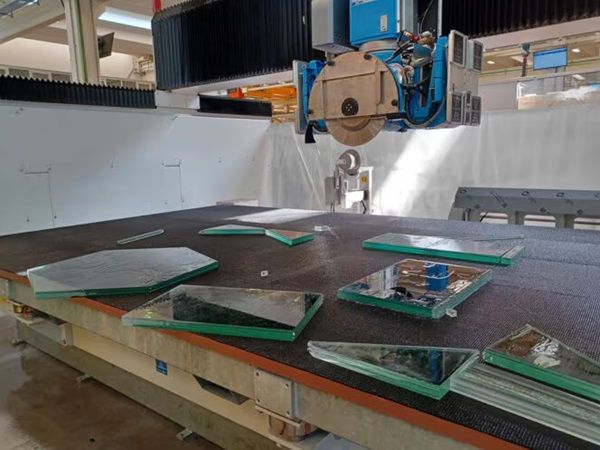HORN Glass, a pioneer in advanced glass technology, has unveiled its latest innovation: the GCS® 301-advanced forehearth system.
This cutting-edge solution is uniquely designed to meet the demanding requirements of high-pull forehearths and the stringent temperature homogeneity (THI) standards needed in non-nucleaic pressed and blown (NNPB) glass production.
Advanced Technology for Superior Performance
The GCS® 301-advanced system stands out due to its integration of the most advanced technology in forehearth design. One of its key features is the specially designed cover block, which incorporates both direct and indirect centerline cooling mechanisms. This innovative approach allows for precise temperature control across various sections of the forehearth, enhancing the quality of the glass produced.
The ability to separate areas along the control zones into two boundary regions is particularly notable. This configuration enables the system to effectively heat the glass while simultaneously directing cool air to a centralized section. As a result, manufacturers can achieve optimal thermal conditions, ensuring consistent glass quality and minimizing defects.
Flexibility and Efficiency
Flexibility is a core principle behind the GCS® 301-advanced. The system is equipped with a left/right heating configuration that adapts to a variety of production needs. This adaptability is essential for modern glass producers facing fluctuating production demands and the need for rapid changeovers. The system’s design not only supports high-pull operations but also enhances overall productivity.
Moreover, the use of high-performance insulating refractories in the GCS® 301-advanced contributes to powerful glass conditioning. These insulating materials are engineered to enhance thermal retention and improve energy efficiency, thereby reducing operational costs and environmental impact. In an industry where every percentage point of energy savings can translate to substantial financial benefits, this innovation is a game changer.
Design
- The GCS® Series 301-advanced design allows a wide range of gob temperatures to produce a variety of different sized articles
- Special cover block design for area separation along the control zones:
- Separated boundary areas to heat the glass particularly at the sides of the forehearth
- Separated central section to guide direct cooling air
- Improved thermal homogeneity through optimized transition between equalizing zone and spout
- Superstructure design with direct & indirect centreline cooling
- Use of high-performance insulating refractories
- Powerful glass conditioning
Features
- High thermal homogeneity (THI) for flint glass and coloured glass (including HORN forehearth boosting)
- Refractory can be designed for additional HORN equipment like: Stirrers, VARI-DRAIN® or forehearth boosting
- High flexibility
- Wide range of production processes
Source: HORN Glass’with additional information added by GlassBalkan







